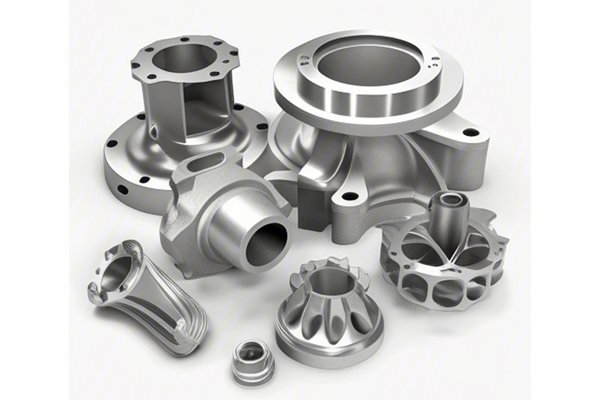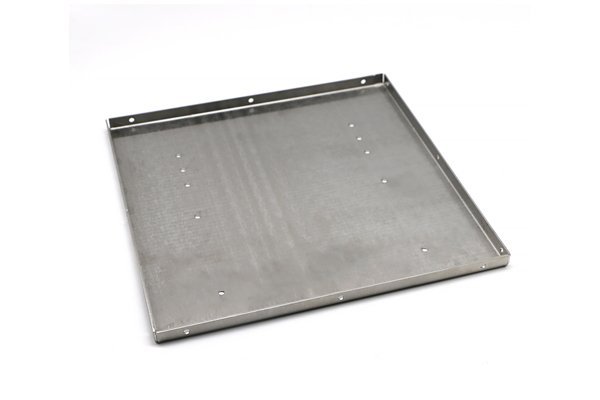Are you aware that gears account for nearly 90% of the world’s mechanical devices? From electric motors and engines to various types of machinery, gears are essential for transferring motion and torque efficiently. In today’s fast-paced and demanding manufacturing environment, the role of precise and durable components, such as custom gears and shafts, has never been more critical. But how can manufacturers meet the rising demand for these intricate parts while ensuring quality and efficiency? Enter CNC machining—a game-changer in modern manufacturing.
Understanding CNC Machining
CNC (Computer Numerical Control) machining is an automated manufacturing process that uses computers to control the movement of machines that cut, shape, and manipulate materials. CNC machining can produce a wide array of custom-engineered components, including gears and shafts, from various materials such as metal, plastic, and composites.
From the design phase to production, CNC machining integrates computer-aided design (CAD) and computer-aided manufacturing (CAM) to streamline the creation of parts with exceptional accuracy. But what specific benefits does CNC machining offer for custom gears and shafts? Let’s explore the topic in detail.
The Demand for Custom Gears and Shafts
Custom gears and shafts have become commonplace in numerous industries, including automotive, aerospace, robotics, and consumer electronics. A few statistics to consider:
Given the essential functions of gears and shafts, manufacturers cannot afford to compromise on precision and material integrity. This is where CNC machining shines.
Benefits of CNC Machining for Custom Gears and Shafts
One of the most significant advantages of CNC machining is its unparalleled precision. Traditional manufacturing methods rely heavily on human skills—where minor mistakes during machining can lead to significant costs. CNC machines maintain tolerance levels as low as 0.001 inches or even less, ensuring that custom gears and shafts fit seamlessly into the intended assembly.
CNC machines execute operations based on coded designs, thereby minimizing human error. This level of accuracy reduces reliance on secondary operations, which further streamlines production.
Modern gears and shafts often require complex shapes and varied profiles that traditional manufacturing cannot easily accommodate. CNC machining allows engineers to create intricate designs that meet specific performance requirements. For example, spiral bevel gears, helical gears, and serrated shafts with unique features can be manufactured with ease.
With multi-axis CNC machines, multiple operations can be completed in a single setup, saving time and ensuring higher accuracy in complex geometries.
CNC machining can work with a wide range of materials, including various metals (aluminum, steel, brass, titanium), plastics, and composites. This versatility is vital for producing custom gears and shafts tailored to specific applications where mechanical properties, such as strength, weight, and conductivity, may vary.
Additionally, CNC machining allows manufacturers to implement surface treatments and finishes that help enhance the performance characteristics of parts, such as corrosion resistance through anodizing or electroplating.
Whether you need a single custom gear or thousands, CNC machining processes can be scaled easily. With robust setups, manufacturers can transition quickly between prototypes and mass production. Advanced versions of CNC equipment are capable of running unattended for extended periods, allowing for optimized operational efficiency.
As production requirements expand, CNC machinery can be modified to speed up actions without compromising quality.
While the initial setup cost for CNC machining can be higher compared to traditional methods, the long-term financial benefits are substantial. The high efficiency, reduced scrap rates, and ability to produce precise parts quickly translate to lower overall production costs.
Additionally, the long lifespan of CNC equipment reduces the need for frequent upgrades and repairs, leading to fewer unexpected expenses.
CNC Machining Workflow: From Design to Production
To better understand how CNC machining works for custom gears and shafts, here’s a breakdown of the typical workflow involved:
The process begins with creating a detailed CAD model of the custom gear or shaft design. Engineers consider parameters such as load, speed, material, and environmental factors to ensure function and durability.
Using either rapid prototyping techniques like 3D printing or a small batch of CNC machined components, manufacturers evaluate the design in practice. This step is crucial for identifying any potential issues before moving on to full-scale production.
Once the design is validated, the CAD model is converted into a machine-readable format via CAM software. This programming includes defining tool paths and operation procedures for the CNC machine.

The programmed CNC machine guides tools to cut, shape, and mill the selected material into the intended gear or shaft shape. Combating machining parameters like speed, feed, and coolant helps enhance tool life and ensure part quality.
After machining, the parts undergo rigorous quality checks to ensure that they comply with specified tolerances. Depending on industry standards, various inspections may be conducted, including dimensional measurements and material testing.
Depending on the requirements, extra operations such as surface finishing, polishing, or coating can be performed to improve the final product’s functionality and aesthetics.
Real-World Applications
CNC machining of custom gears and shafts has proven its value across many industries. Here are a few examples of its application:
Challenges and Solutions
While CNC machining is revolutionary, manufacturers face specific challenges:
The setup costs of CNC machining tools and software can be daunting for small businesses.
Solution: Investing in CNC technology can be viewed as a long-term expense rather than a short-term one. Moreover, businesses can partner with established CNC manufacturers for outsourcing production initially while gauging full-time needs.
Operating CNC machines requires a certain level of expertise, which can strain existing staff.
Solution: Companies can invest in training programs or collaborate with educational institutions to ensure their workforce is skilled in modern machining technologies.
CNC programming software may require time for staff to familiarize themselves with new CAD/CAM systems.
Solution: Implementing gradual training sessions and utilizing user-friendly software can mitigate this challenge. Companies may also collaborate with software providers for tailored training packages.
Innovation in CNC Machining and the Future
CNC machining is continually evolving through technological advancements such as:
CNC machining has emerged as a vital solution to the increasing demand for custom gears and shafts in modern manufacturing processes. With numerous advantages including precision, material versatility, efficiency, and cost-effectiveness, CNC machining truly revolutionizes production capabilities.
As industries continue to evolve, the need for high-quality, reliable components will only increase. For businesses looking to thrive in a competitive environment, embracing CNC machining technology is no longer an option—it’s a necessity.
Ultimately, understanding how CNC machining works and its practical applications can help manufacturers leverage these modern technologies to their advantage. Therefore, whether you’re an engineer, manufacturer, or industry stakeholder, considering the importance of CNC machining for custom gears and shafts is essential for future success. The power of precise manufacturing could very well dictate the future landscape of industries worldwide.
Related Posts
- Here are a few question-style FAQ titles based on your keyword list: 1. How Can You Solve Delivery Delays in CNC Machining Efficiently? 2. What Are the Performance Differences Between 430 and 304 Stainless Steel in CNC Machining? 3. How Does CNC Prototyping Help in Material and Process Selection Verification? 4. How Do Different Plastics Perform in CNC Machining Processes Compared to Metals? 5. What Are the Key Differences in Machining Performance Between Various Aluminum Alloys?
- What Are the Benefits of CNC Machining for Custom Aluminum Parts Production?
- How Does a CNC Custom Processing Factory Guarantee the Accuracy of Customized Products?






